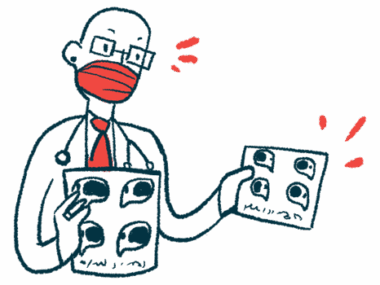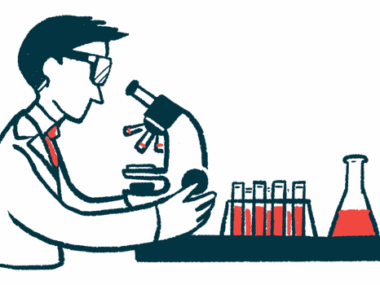My endocrinologist’s advice on diagnosing Cushing’s disease
Theodore Friedman shares suggestions for both patients and doctors
Written by |

I’ve been living with Cushing’s disease since 2018. Over the years, I tried out multiple doctors until I formed my perfect care team, which includes endocrinologist Theodore Friedman, MD, PhD. He helped me obtain my diagnosis in 2020, pushed for my endoscopic transsphenoidal surgery to remove my pituitary tumor, and has been there through my Cushing’s recurrence.
I recently had the pleasure of interviewing Friedman via email. Excerpts from our conversation follow.
NC: Why do you think cyclic Cushing’s disease is missed so often?
TF: I think it has to do with a terminology issue. I was recently at the Endocrine Society meeting and went to a session on cyclic Cushing’s and tried to define it as having peaks and troughs. They did mention that what I describe as episodic Cushing’s can be called variable Cushing’s and felt that it is fairly common. Even cyclic Cushing’s, they felt, occurs in 20% of cases. They are going to do a registry of cyclic Cushing’s to show that it is much more common than people think, but I think most endocrinologists expect to do one test and, if that test is negative, they dismiss the patient as not having Cushing’s. My philosophy is to do multiple tests to dig deeply into whether a patient has Cushing’s or not.
What advice do you have for patients who believe they have Cushing’s?
First of all, they should make an appointment with a doctor that they trust. That doctor should set them up with rigorous testing, including salivary cortisols and urinary-free cortisols, and instruct them on when to do their testing. I recommend they do MRI imaging and look at signs and symptoms, and eventually put the patient on a medicine to lower their cortisol, which will start making them feel better right away. If you’re still searching for a doctor, please feel free to make an appointment with me.
What is needed for an official Cushing’s diagnosis?
I do need at least two different tests that [show] high [cortisol levels], either urinary-free cortisols, salivary cortisols, midnight serum cortisols, or urinary 17-hydroxysteroids. I like to see a positive tumor on their MRI and have my neurosurgeon also verify that. Then, I like to put the patient on a medicine like ketoconazole to show that their cortisol improves.
What supplements and treatments do you recommend for Cushing’s patients?
First of all, they should get diagnosed properly. Most patients with Cushing’s have muscle weakness, and I often give them glutamine for their muscle weakness. Giving vitamin E will help protect their liver, especially if they are being treated with ketoconazole. I encourage them to eat a clean diet and exercise as much as they can, and get a good night’s sleep.
What do you do differently from other doctors regarding diagnosis?
I dig deeply into the diagnosis. I do not do just one test. I find that the dexamethasone suppression test that most doctors do is inadequate in that most patients with mild Cushing’s disease [experience decreased cortisol levels in response] to dexamethasone, and if that is the only test done, the patient would be told they don’t have Cushing’s. I believe in the patient, listen to them, and try to get to the bottom of their diagnosis.
What are the most common early signs of Cushing’s that you come across?
Patients with Cushing’s can have a variety of signs and symptoms. Their signs include a buffalo hump, stretch marks, central obesity with thin extremities, trouble standing up from a squat, and hair loss. Their symptoms, which are often more manifested than signs, include fatigue, being wired at night, poor sleep, low libido, decreased muscle strength, depression, mood changes, and most importantly, weight gain.
How often do you see patients with both polycystic ovary syndrome (PCOS) and Cushing’s?
I do see that a lot, as they are conditions that can occur together. I did do a study looking at the testosterone levels in both patients with PCOS and patients with Cushing’s disease that was published in Hormone and Metabolic Research in 2008. Patients with PCOS, in general, have a higher testosterone level than in Cushing’s disease, but they can overlap, and many patients have both.
Do you have any advice for patients who were recently diagnosed with Cushing’s?
Yes. Stick with it and you will likely get better. The medicines are quite effective. Surgery is also an option. Make sure you do your testing when you are in a high. Make sure you follow up and have your labs ready when you see Dr. Friedman.
***
When I was going through the diagnostic process, I dealt with exactly what Friedman described: I was given one test and then dismissed. Finding Friedman was life-changing for me, and I’m grateful for his care.
You can follow my journey on TikTok and YouTube.
Note: Cushing’s Disease News is strictly a news and information website about the disease. It does not provide medical advice, diagnosis, or treatment. This content is not intended to be a substitute for professional medical advice, diagnosis, or treatment. Always seek the advice of your physician or other qualified health provider with any questions you may have regarding a medical condition. Never disregard professional medical advice or delay in seeking it because of something you have read on this website. The opinions expressed in this column are not those of Cushing’s Disease News or its parent company, Bionews, and are intended to spark discussion about issues pertaining to Cushing’s.






Susan
This is a great piece! The only issue I have is that I was misdiagnosed for over 20 years because my pituitary tumor has never shown on an MRI. I would hate to see other patients go through what I went through if their tumors don't appear in imaging, but all of the testing shows Cushing's. Many doctors dismiss patients when they can't see the tumor. My neurosurgeon was able to remove it during transsphenoidal surgery, he's an amazing surgeon who doesn't give up when imaging proves unreliable.
tyler
Great article Noura. You are so helpful to all of us out here fighting this treacherous disease. Dr. Friedman's commitment to testing and willingness to listen to our concerns for our daughter was a game-changer and I credit him greatly for helping to save her life. I would encourage anyone who feels they may have high cortisol to go see Dr. Freidman.
Amy
This article gives me hope for my daughter. She has had 3 transhenoidal surgeries for Cushings Disease and is currently taking cabergoline with spironolactone, for water retention. Nothing has improved. She suffers daily.
(1st surgery was acth tumor, went into remission. Year later it came back, remission again, and then third surgery wasn't successful so they are trying medication). I don't think she is on the right medication and I plan to discuss this with her endocrinologist tomorrow. The muscle weakness, and heart palpitations are brought up but never addressed. She is 25yrs old..
Masayo Quick
That is an extremely rare MD! Most in the U.S. gaslight patients saying nothing is wrong and they are drug-seeking even when no painkillers are requested. I had to get my pituitary tumor removed in Guadalajara because U.S. MDs won't do anything and claim it cannot cause any symptoms.